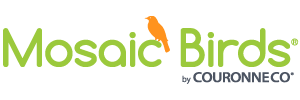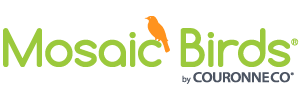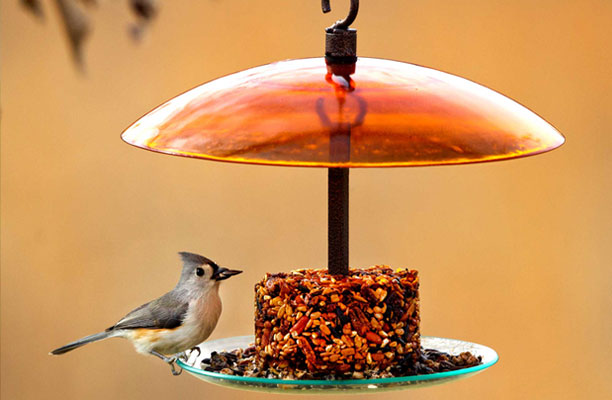Everyone hopes their bird feeders will be the most popular on the block, with heavy traffic from their favorite songbirds or hummingbirds. With busy feeders comes necessary cleaning to ensure continued good health and to contain the spread of diseases. Here are helpful tips on how to best clean your type of bird feeder.
1. Gather the tools you’ll need. This will depend on the type and size of your feeder.
- Rubber gloves to avoid contamination.
- Bottle brush, best for tube-style feeders, or other stiff scrubbing brush.
- Toothbrush or micro brush for small detailed areas.
- Large bucket or utility sink.
- Soft cloths to wipe down and dry.
- For hummingbird feeders, you’ll also need a port brush or pipe cleaner.
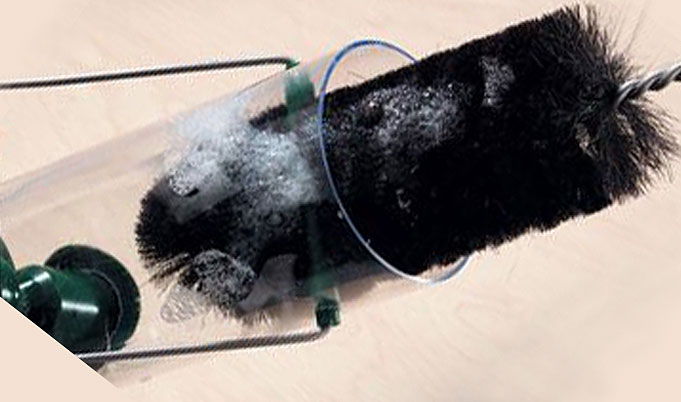
2. Prepare your cleaning solution.
Harsh chemicals are not recommended for cleaning bird feeders so birds do not ingest anything potentially harmful to their delicate systems. Here are the three most commonly used cleaning solutions for bird feeders.
-1 part vinegar to 2 parts water
-Hot water and gentle dish soap. Soaking in hot water alone may dissolve and remove any bacteria or dried nectar without requiring soap or scrubbing.
-1 part bleach to 9 parts water. This option can also be used to disinfect feeders after using either of the above cleaning methods. It’s imperative to rinse with LOTS of fresh water to ensure all of the bleach has been removed prior to refilling. This step is not recommended for use with hummingbird feeders.
3. Cleaning/Soaking
-Dispose of any food currently in the feeder. Feeders should be cleaned about once every two weeks, more often during wet weather or busy feeding times.
-Disassemble the feeder as much as possible to give each part a thorough cleaning.
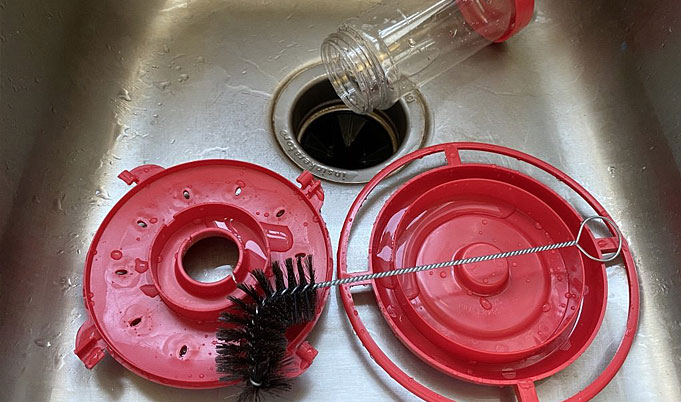
-Scrub each part until all debris is removed. Rinse thoroughly, then rinse again, especially if using a bleach solution. If your feeder hasn’t been cleaned recently or is caked with dried food or nectar, it may benefit from a good 20-minute soaking in hot soapy water to loosen residue and decrease the need to scrub.
-Make sure the water level is adequate to completely submerge all of the parts.
-Allow feeder components to completely dry before reassembly. Any remaining moisture could lead to mildew or mold.
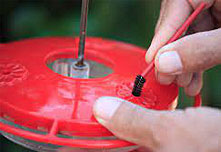
Hummingbird feeders require a slightly different cleaning process. They should be cleaned at least every 2-3 days or each time they are refilled to prevent mold and mildew. Hummingbird digestive systems are more delicate, so when cleaning their bird feeders, use hot water and a brush only. Don’t add soap or any other cleaning agents.
Sugar can become crystallized and difficult to dislodge. This is more often seen in bottle-style ports where the nectar is stored above the ports.
Soak longer in hot water to dissolve and use a pipe cleaner or micro brush to thoroughly clean the tiny ports.
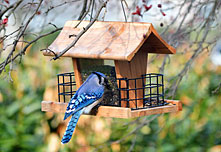
Wooden bird feeders absorb oils from seeds and foods and may become more difficult to clean over time. Focus on cleaning the interior only with a splash of hot soapy water and a quick scrubbing so as not to remove any painted or stained finish on the exterior. Interiors of wooden feeders are usually not treated with stain or paint that would come into contact with food. Do not use bleach or vinegar as the smell will be absorbed and will linger, possibly causing birds to become disinterested in visiting your feeder.
Photo courtesy PHILIPPE GERBER/GETTY IMAGES
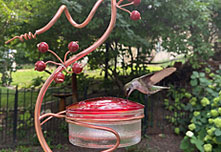
Copper feeders add sophistication to bird viewing areas and are highly tarnish-resistant but require some added attention. Over time the surface will discolor to a pale green patina if not preserved. If you choose to restore the sheen of your copper feeder, here is a natural alternative.
Photo courtesy Jeff Driscoll/Coppervine Feeders
Non-Toxic Copper Cleaner:
Mix 2 tablespoons salt, 1 tablespoon lemon juice, and 1 tablespoon vinegar. Rub with a sponge and allow to dry. Rinse with hot water and dry with a soft cloth. Or, apply a paste of lemon juice and cream of tartar and leave on for 5 minutes. Wash in warm water and dry with a soft cloth.
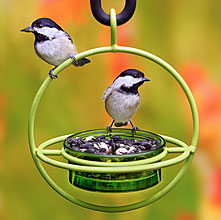
With only two components, the Mosaic Birds Hummble Bold Bird Feeder is a colorful and functional garden accessory. A detachable 3.4oz recycled glass and durable powder-coated metal allow for quick and easy cleaning with soap and water.
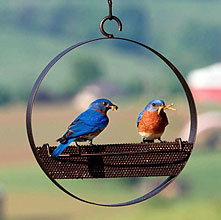
Another easy-to-clean option is the Mosaic Birds Bistro Bird Feeder. The removable perch and single-piece metal feeder can be scrubbed with a brush and soapy water.
In addition to keeping feeders clean, it’s essential to clean the area below and nearby feeders since birds may spill or kick food several feet away. While your feeder is drying, take a few minutes to clean the ground below your feeders to prevent a build-up of discarded seeds and other waste. Moldy, decomposing seeds can make birds sick and can attract unwanted rodents.
Once your feeder is completely dry, refill with fresh nectar for hummers or various treats for other attracted visitors, sit back, and enjoy the benefits of your cleaning efforts.

